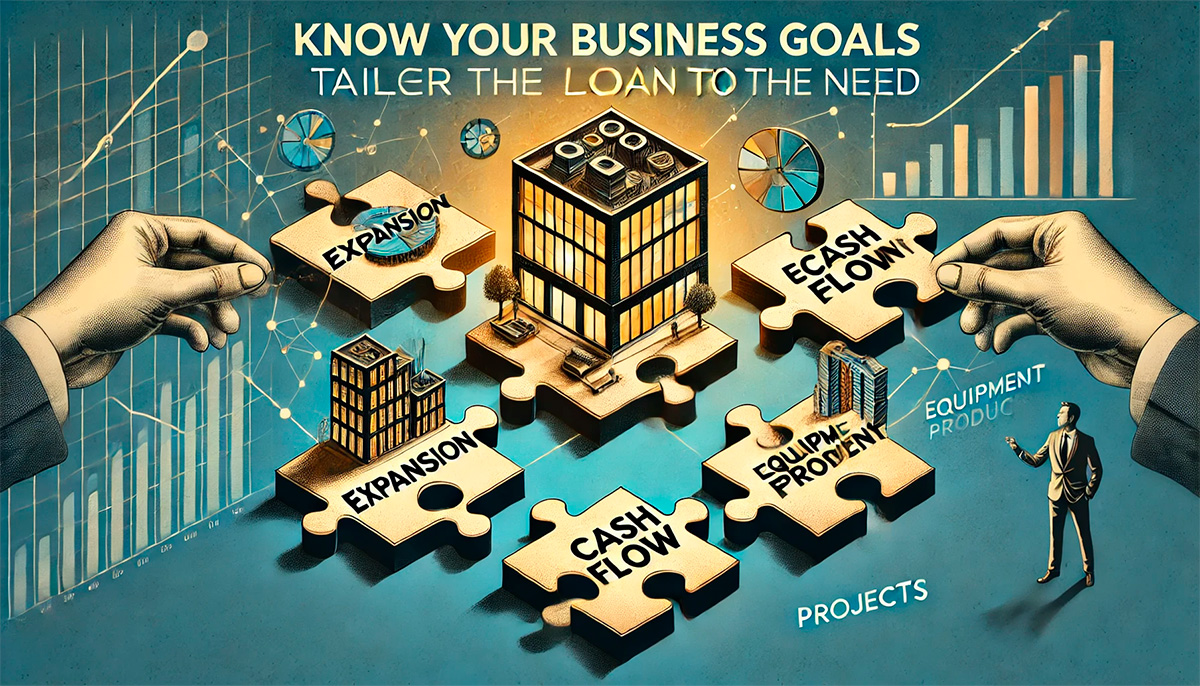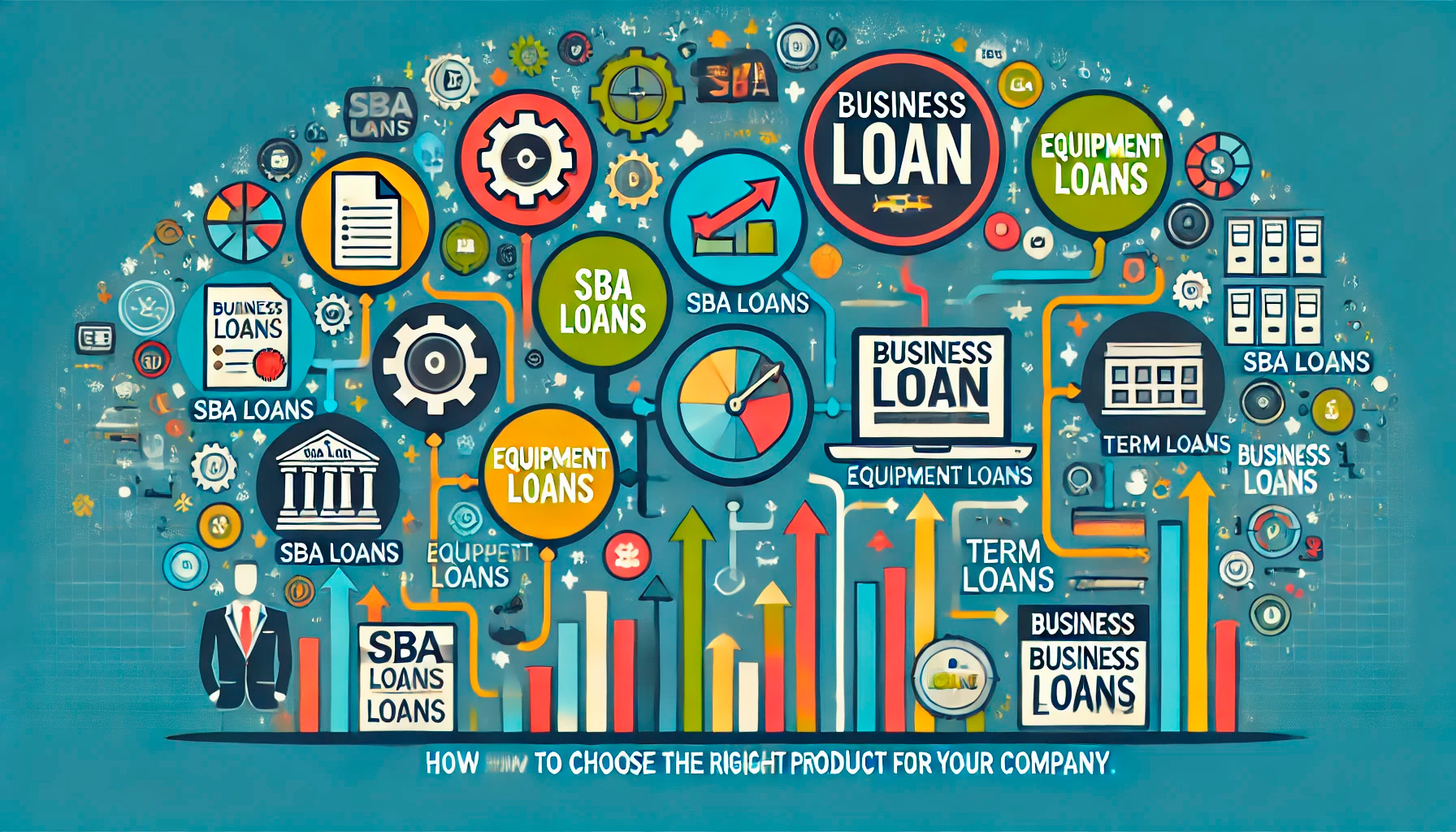For businesses looking to grow, secure working capital, or invest in new opportunities, choosing the right loan product is crucial. The wrong loan could burden your company with high-interest payments or unnecessary fees, while the right one could be the key to unlocking sustainable growth. So how do you find the best fit? In this guide, we’ll explore how to evaluate business loans strategically, ensuring that the product you choose aligns with your company’s specific goals and needs.
Know Your Business Goals: Tailor the Loan to the Need
The first step in choosing the right loan is to clearly define why you need it. Different loans serve different purposes, and choosing the right one starts with understanding the specific needs of your business. Here are some common goals and their matching loan products:
- Expanding Operations: If you’re opening new locations or scaling up production, a long-term loan like an SBA loan or term loan may be the best fit. These loans offer larger sums and extended repayment periods, allowing for sustained growth.
- Managing Cash Flow: If your business has fluctuating revenue or seasonal operations, consider a business line of credit. This allows you to borrow funds as needed, providing flexibility to handle expenses during slower months.
- Purchasing Equipment: Equipment loans are specifically designed to finance machinery or technology. The equipment itself serves as collateral, which often results in lower interest rates compared to unsecured loans.
- Financing Short-Term Projects: For short-term capital needs, such as inventory purchases or bridging cash flow gaps, short-term loans offer quick funding with faster repayment periods.

Pro Tip: Start by identifying the specific purpose of the loan and match it to the loan product designed for that purpose. This ensures you’re not borrowing more than you need or committing to terms that don’t suit your cash flow.
Evaluate the Types of Business Loans Available
Once you know what your business needs, it’s time to evaluate the various loan products available. Here’s a breakdown of the most common types of business loans and their uses:
Term Loans
A term loan is a traditional loan where you borrow a fixed amount and repay it over a set period with interest. It’s ideal for large one-time investments like purchasing equipment, expanding facilities, or funding long-term projects.
Business Line of Credit
This is a flexible loan product that allows you to borrow up to a set limit as needed, rather than taking a lump sum. You only pay interest on the amount you actually use. This is perfect for covering short-term working capital needs or managing uneven cash flow.
SBA Loans
Small Business Administration (SBA) loans are government-backed loans that offer favorable terms, including low interest rates and long repayment terms. These loans are ideal for businesses that need to borrow larger amounts for major projects but may not qualify for traditional loans.
Equipment Financing
As the name suggests, equipment loans are used to finance the purchase of business-related equipment. The equipment itself serves as collateral, reducing the lender’s risk and often leading to lower interest rates.
Invoice Financing
This option allows you to borrow against your business’s unpaid invoices. It’s a useful solution for businesses that struggle with long payment cycles, as it helps bridge the gap between invoicing and payment collection.
Consider Interest Rates and Loan Terms
When comparing loan products, it’s essential to understand how interest rates and repayment terms will impact your business’s finances. A lower interest rate might seem attractive, but it’s equally important to look at the overall terms of the loan.
Fixed vs. Variable Interest Rates
- Fixed Interest Rates: These remain the same throughout the life of the loan, providing predictability and stability for your payments.
- Variable Interest Rates: These fluctuate based on market conditions. They may offer lower initial rates, but there’s a risk of rising payments if interest rates increase.
Key Consideration: If your business operates on tight margins, a fixed-rate loan might be safer, as it provides certainty in your budget. If you anticipate rising revenue, a variable-rate loan could offer short-term savings.
Loan Term Length
The term of the loan, or the repayment period, also plays a key role in determining which product is right for you:
- Short-Term Loans: These have repayment periods ranging from a few months to a couple of years. They’re ideal for immediate needs, such as inventory purchases or temporary cash flow issues, but they typically come with higher interest rates.
- Long-Term Loans: These have longer repayment periods, sometimes up to 25 years. They’re suited for major business investments, such as purchasing property or expanding operations, and typically come with lower interest rates.
Weigh the Costs: Interest vs. Fees
It’s important to look beyond interest rates when choosing a loan. Many loans come with fees that can increase the overall cost of borrowing. These include:
- Origination Fees: The cost of processing the loan.
- Closing Fees: Additional costs incurred at the time of finalizing the loan.
- Prepayment Penalties: Fees charged if you pay off the loan early.
Pro Tip: Always ask for a breakdown of all associated fees before committing to a loan. Some lenders may offer loans with lower interest rates but high fees, which could offset any potential savings.

Assess Your Business’s Financial Health
Your business’s financial health plays a major role in determining what type of loan you qualify for and the terms you’ll be offered. Lenders will assess your revenue, cash flow, credit score, and existing debts when determining whether to approve your loan and at what rate.
Steps to Strengthen Your Financial Profile:
- Improve Your Credit Score: Pay down existing debts and ensure all bills are paid on time to improve your business’s credit score.
- Prepare Detailed Financial Statements: Lenders want to see accurate and up-to-date financials, including balance sheets, profit and loss statements, and cash flow reports.
- Reduce Existing Debt: If your business is carrying a large amount of debt, consider paying some of it off before applying for a new loan. Lenders prefer businesses with low debt-to-income ratios.
By improving your financial standing, you increase your chances of securing a loan with favorable terms and lower interest rates.
Choose a Lender That Aligns with Your Values
While the loan terms and rates are critical, the lender you choose also matters. Look for a lender that understands your industry and values your long-term success. You want a financial partner who can offer advice and flexibility, not just a source of capital.
What to Look for in a Lender:
- Reputation: Read reviews and ask for recommendations to ensure the lender has a good reputation.
- Support: Does the lender offer customer service and support that’s accessible and responsive?
- Flexibility: Some lenders offer flexible repayment options or the ability to renegotiate terms if your business’s circumstances change.
Conclusion: Find the Loan That Fits Your Business
Choosing the right business loan isn’t just about securing the lowest interest rate—it’s about finding a loan product that fits your company’s specific needs and long-term goals. By understanding the different loan types available, comparing terms, and assessing your business’s financial health, you can make an informed decision that will support your growth and success.
Remember, the right loan can be a powerful tool for driving your business forward—so take the time to evaluate your options carefully and choose the one that aligns best with your company’s future vision.

